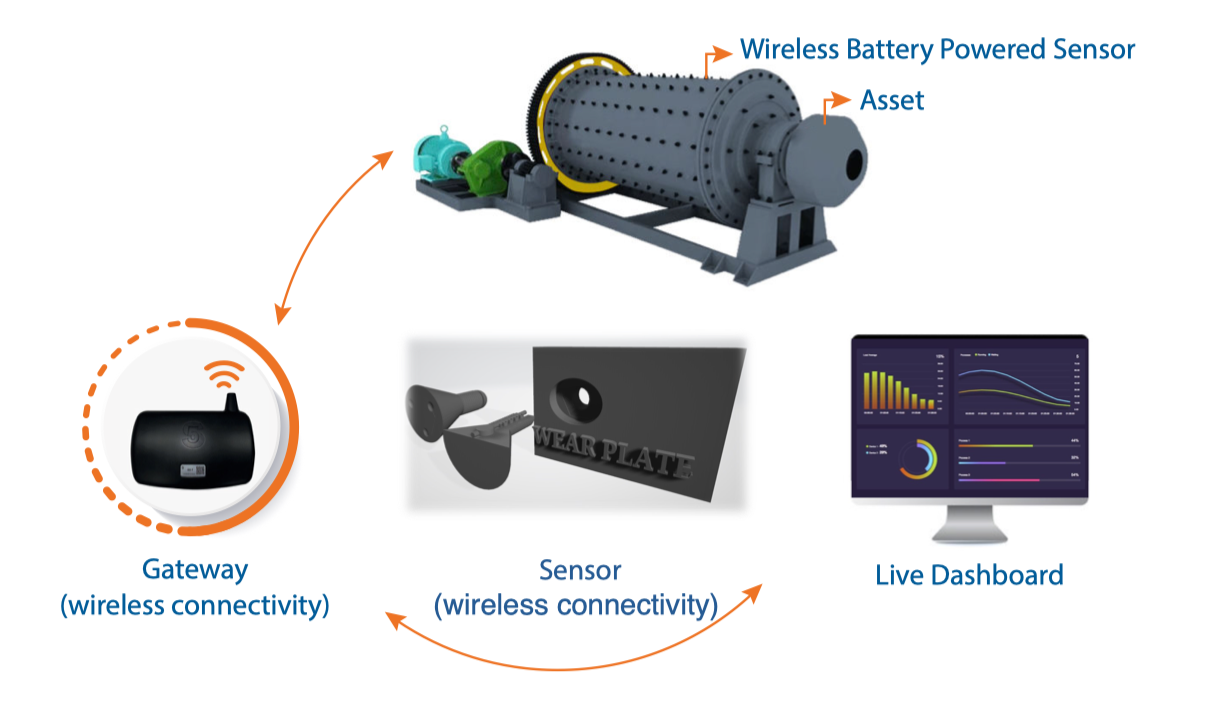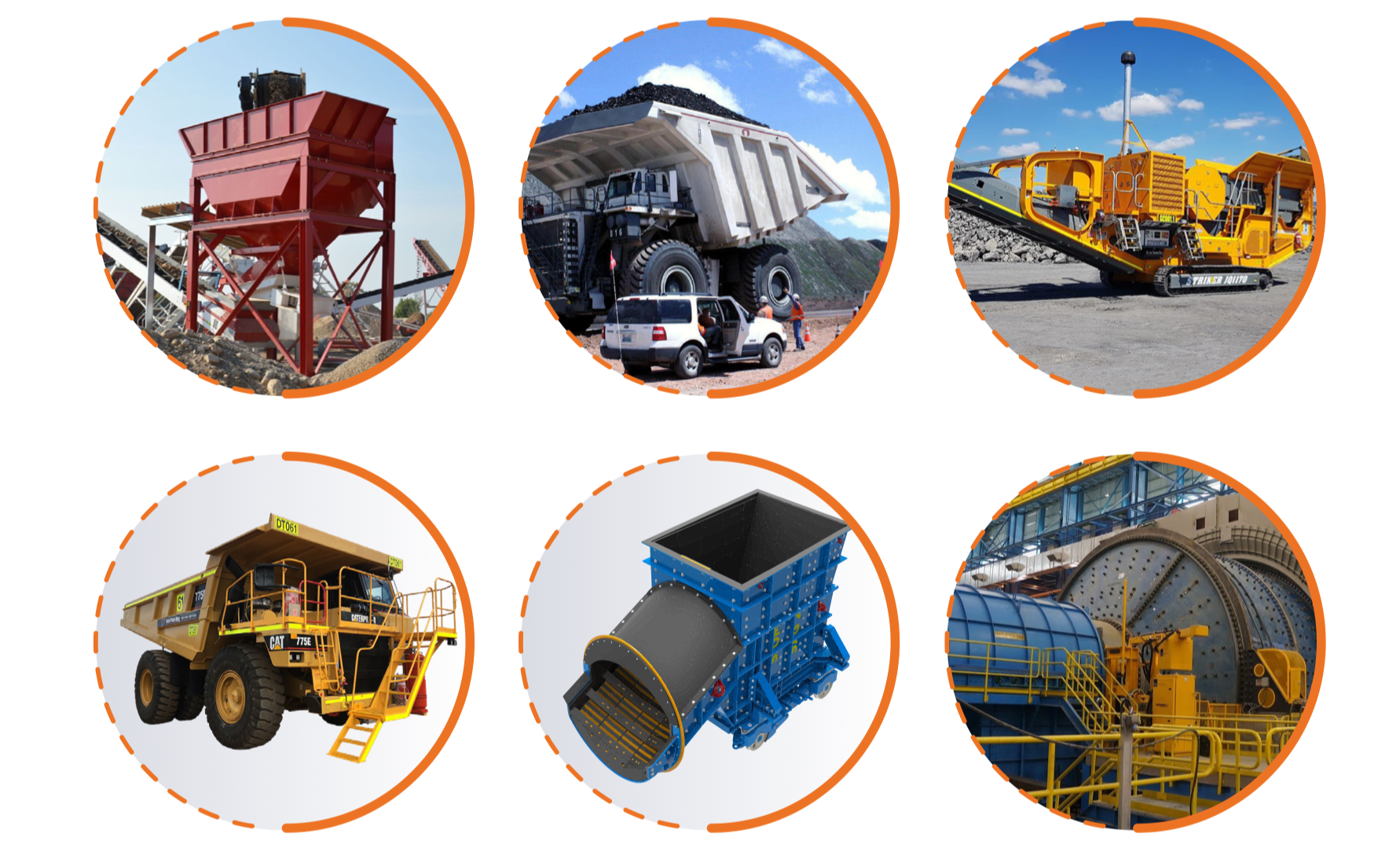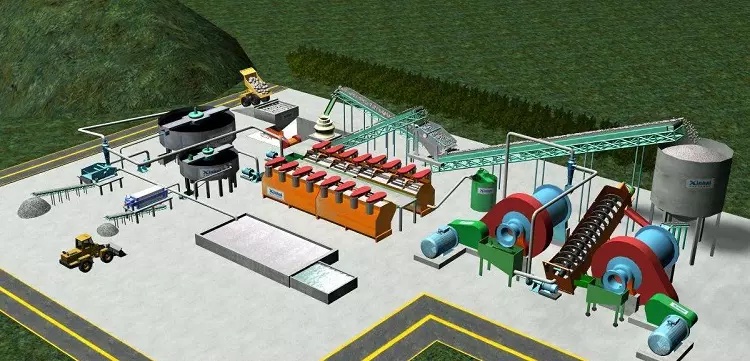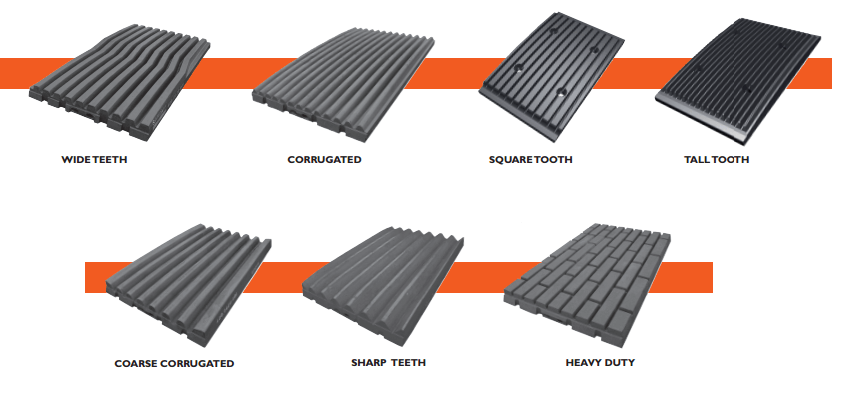WearMon
Wear Liner real-time monitoring sensors with condition-based predictive maintenance software

Introduction:
In mining equipment and mining plants with abrasion from material transfer and processing, wear resistant liners and wear plates are traditionally being used to armour plate them. Wear liners are consumables used in equipment like mills, crushers, feeders, chutes, bins, transfer points, tubs, screens, loading and hauling machines, grinders, material classification machines, transfer chutes, screening, floatation, bulk material handling, mobile equipment, concrete mixers, debarking drums, scrubber or washing drums, bowling drums, pelletizing drums, cyclone underflow boxes, and impact plates.

The Problem:
Wear liners need maintenance and replacement frequently. The inspection and replacement process are quite expensive. The Inspection is a manual process and requires rope access or working at height and heavily relies on the individual’s experience to estimate the wear and forecast the change-out time. There are down-time, safety risks, inaccuracy in shut down and warehouse inventory planning.
Quite often, the maintenance teams replace all wear liners regardless of their wear level, as either they don’t have accurate data about the number of the worn liners or insufficient data to predict the durability of the good liners until the next planned shutdown. This mass replacement means more cost on the material, more waste on replacing good liners, long downtime to replace more liners, more labour cost, more likelihood of personnel exposed to safety risks.

The Solution:
S5 System has developed a non-invasive online condition monitoring system for wear liners which can directly be installed on any type of mining plant liner material including rubber, metallic, ceramic, polyurethan, and polyethylene.
The solution offers accurate real-time and historical wear data, machine learning, predictive condition-based maintenance, suggested shut down planning info, accurate required inventory, shutdown period, and next service forecast.
Features:
- Suitable for liners with thickness from 10 millimetres to 100 millimetres.
- Zero wiring requirements all sensors are self-contained with the power from the battery which last for five years and send a data wirelessly through their own network.
- With all self-diagnostic capabilities and zero calibration, this system guarantees no false or missed or lost data feed.
- Access to the graphical user interface through mobile phone, Tablets, laptops, and computers.
- Operating temperature from -30 degrees to +80 degrees Celsius.
- Communication to server through the system’s own dedicated Wi-Fi, LTE, fibre optic or network cable with no impact on the Client IT/OT infrastructures and cyber security concerns.
- The sensors are rugged, low profile, and hermetically sealed without affecting the liner profile.
- Suitable for use in all types of wear resistant liners.
- Real-time monitoring of all wear plates.
- The sensors are battery-powered with 5 years of battery life guaranteed.
- Real time online monitoring system to identify the ideal time to replace wear liners.
- Data Integrity, authenticity, confidentiality, and availability, guaranteed through the preventive and mitigative controls in the system’s design.


Benefits:
- Full wear map across liner profile.
- Optimization of equipment performance to balance capacity, setting, power draw, and wear rate by integrating wear data with plant’s other performance data.
- Reduces maintenance downtime by up to 50%.
- Less downtime, as the system provides real-time forecasts for expected liner change out timing.
- Reduced costs, no need to stop the equipment to perform wear plate inspection. Manual inspections and related plant downtimes are eliminated by using online real-time monitoring system.
- Improved safety, reduces time exposure in confined space, hot works, rope access, working at height.
- Improve sustainability, the system enables liner material to be fully utilised minimising unnecessary changeout and wastage.
How it works:
Battery powered wireless wear sensors are the foundation of the WearMon system. the sensors are attached to the chute liners and constantly measure the remaining material thickness. Sensors are retrofitted inside one of the bolts on each monitored wear liner. The WearMon sensors send their signal to a receiver which collects data from all sensors on the equipment and then the receiver transfers the data to the server. A user interface graphically shows all heat map of the liners’ geometry, historical data, and predictions.
This system continuously monitors the remaining thickness at each sensor location and reports to the server. Information then is processed on the server and form a basis to predict the remaining life. if the next scheduled maintenance state is pre-set, then the shutdown date can be entered directly into the software and if there is a plan shutdown date entered into system then the software algorithm will determine which liners will need to be changed out and predicts the number and location of required material accordingly. Alternatively, if maintenance dates are flexible, the system generates predictions with accurate estimate of the serviceable life of the liners and suggest replacement date.